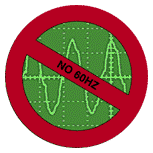

Lab #1: Recording the pulsatile electric organ discharge (EOD) and jamming avoidance response ofGnathonemus petersii, an African weakly electric fish with a variable discharge rate. This lab is designed to familiarize students with the data acquisition setups and recording & monitoring hardware without the difficulties of a dissection. Students will be given a set of questions to work through as they do the lab.
Lab #2: Recording from mechanoreceptive afferents in the leg of an American Cockroach Periplaneta americana. We shift from measuring a bioelectric action potential-like pulse in water to extracellularly measuring a real action potential going by on one leg's afferent nerves.
Lab #3: Recording from the ventral nerve of the American Cockroach Periplaneta americana. Using silver-silver chloride hook electrodes we record the activity of the the giant axons in the ventral nerve in response to air puffs to the cerci, and measure the conduction velocity of the nerve.
Lab #4: Cercal nerve response and ventral nerve neuropharmacology in Periplaneta americana.
Lab #5 & #6: Since we were unable to collect usable data from the frog optic tectum, here's a take home assignment covering issues that arose during the labs.
Lab #7: Autonomic responses in the VLM of the rat. We shift 5 floors up in Burrill Hall to the Tony Waldrop lab, to utilize a dedicated setup for studying mammalian autonomic responses.
Lab #8: Intracellular recording of Aplysia abdominal ganglion neurons.
Lab #9: Simulation of squid giant axon using the GENESIS neural simulator package. We will utilize workstations in Dr. Mark Nelson's lab to work through the problems in Chapter 4 of the Book of Genesis, written by Nelson and Rinzel.
